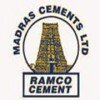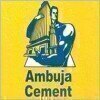Filter interviews by
Visaka Industries EHS Officer Interview Questions and Answers
Visaka Industries EHS Officer Interview Experiences
1 interview found
I applied via Approached by Company and was interviewed in Dec 2021. There were 3 interview rounds.

(1 Question)
- Q1. Share your current day to day activities?
- Ans.
I oversee EHS compliance, conduct audits, and promote safety culture in the workplace.
Conduct regular safety audits to identify hazards and ensure compliance with regulations.
Develop and implement training programs for employees on safety protocols.
Investigate incidents and near misses to determine root causes and prevent recurrence.
Collaborate with management to create and update EHS policies and procedures.
Monitor en...
(2 Questions)
- Q1. Expected CTG and compared my last job bonus and increment details
- Q2. It was good negotiation and HR from head office supported me in good communication. Joining in Visaka, then they had further followup upto receiving my appointment letter
Interview Preparation Tips
Top trending discussions






Interview questions from similar companies

I applied via Company Website and was interviewed in Sep 2020. There was 1 interview round.
Interview Questionnaire
1 Question
- Q1. Based on your current profile
Interview Preparation Tips

Interview Questionnaire
1 Question
- Q1. Interview only related to work

I applied via Walk-in and was interviewed before May 2021. There were 3 interview rounds.
(2 Questions)
- Q1. Working behaviour working response suaitbale location extra
- Q2. Job responsibilities achivement personal information such as background
(1 Question)
- Q1. Work details Position

Interview Preparation Tips

I applied via Walk-in and was interviewed in Feb 2021. There were 3 interview rounds.
Interview Questionnaire
2 Questions
- Q1. Your working background with daily routine?
- Q2. Experience in the past
- Ans.
I have diverse experiences in administration, project management, and customer service, enhancing my skills in communication and organization.
Worked as an administrative assistant, managing schedules and correspondence for a team of 10.
Led a project to streamline office processes, resulting in a 20% increase in efficiency.
Provided customer support in a retail environment, resolving issues and improving customer satisfa...
Interview Preparation Tips

Interview Questionnaire
2 Questions
- Q1. About the training where I undergone,
- Q2. And about basic mining information

I applied via Referral and was interviewed before Jan 2022. There were 2 interview rounds.

(2 Questions)
- Q1. What is sales and difference
- Ans.
Sales is the process of selling products or services, while difference refers to the distinction between two or more things.
Sales involves convincing customers to purchase a product or service, while difference is about identifying the unique qualities that set one thing apart from another.
Sales is focused on generating revenue and increasing profits, while difference is about understanding the nuances and subtleties t...
- Q2. What is marketing and difference
- Ans.
Marketing is the process of promoting and selling products or services, while advertising is a subset of marketing that involves paid communication through various media channels.
Marketing involves identifying customer needs, creating products or services to meet those needs, and promoting them through various channels.
Advertising is a subset of marketing that involves paid communication through various media channels ...
Interview Preparation Tips
Don't go if tym is more than 9 hrs

I applied via Company Website and was interviewed in Mar 2023. There were 3 interview rounds.

(4 Questions)
- Q1. Experience regarding and filed
- Ans.
I have experience in various fields including customer service, administration, and event planning.
Worked as a customer service representative for 2 years
Managed administrative tasks such as scheduling appointments and maintaining records
Organized and executed successful events for a non-profit organization
Adapted quickly to new roles and responsibilities
- Q2. How much and in which
- Q3. What do you gain from experience
- Q4. Expections and
Maths reasoning English general knowledge

I applied via Approached by Company and was interviewed in Jan 2024. There were 4 interview rounds.
(1 Question)
- Q1. Machine related and previous work knowledges
Reasoning and mental ability
(1 Question)
- Q1. About your self
(1 Question)
- Q1. Medical test and verification
Interview Preparation Tips

I applied via Naukri.com and was interviewed in Feb 2022. There were 2 interview rounds.

(2 Questions)
- Q1. Tell me about yourself.
- Q2. Work Experience and working culture.
Interview Preparation Tips
Visaka Industries Interview FAQs
Tell us how to improve this page.
Visaka Industries Interviews By Designations
- Visaka Industries Assistant Officer Interview Questions
- Visaka Industries Assistant Engineer Interview Questions
- Visaka Industries Senior Engineer Interview Questions
- Visaka Industries Warehouse Manager Interview Questions
- Visaka Industries Sales Officer Interview Questions
- Visaka Industries Logistics Manager Interview Questions
- Visaka Industries HR Manager Interview Questions
- Visaka Industries Sales Executive Interview Questions
- Show more
Interview Questions from Similar Companies
Visaka Industries EHS Officer Reviews and Ratings
based on 2 reviews
Rating in categories
|
Junior Engineer
45
salaries
| ₹1.3 L/yr - ₹6.2 L/yr |
|
Sales Executive
40
salaries
| ₹2 L/yr - ₹5.6 L/yr |
|
Junior Executive
34
salaries
| ₹2.2 L/yr - ₹6 L/yr |
|
Assistant Officer
33
salaries
| ₹3.6 L/yr - ₹7.1 L/yr |
|
Area Manager
32
salaries
| ₹5.5 L/yr - ₹11 L/yr |

JK Cement

ACC

Shree Cement

Dalmia Bharat Cement
- Home >
- Interviews >
- Visaka Industries Interview Questions












